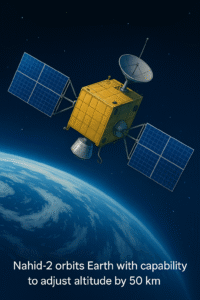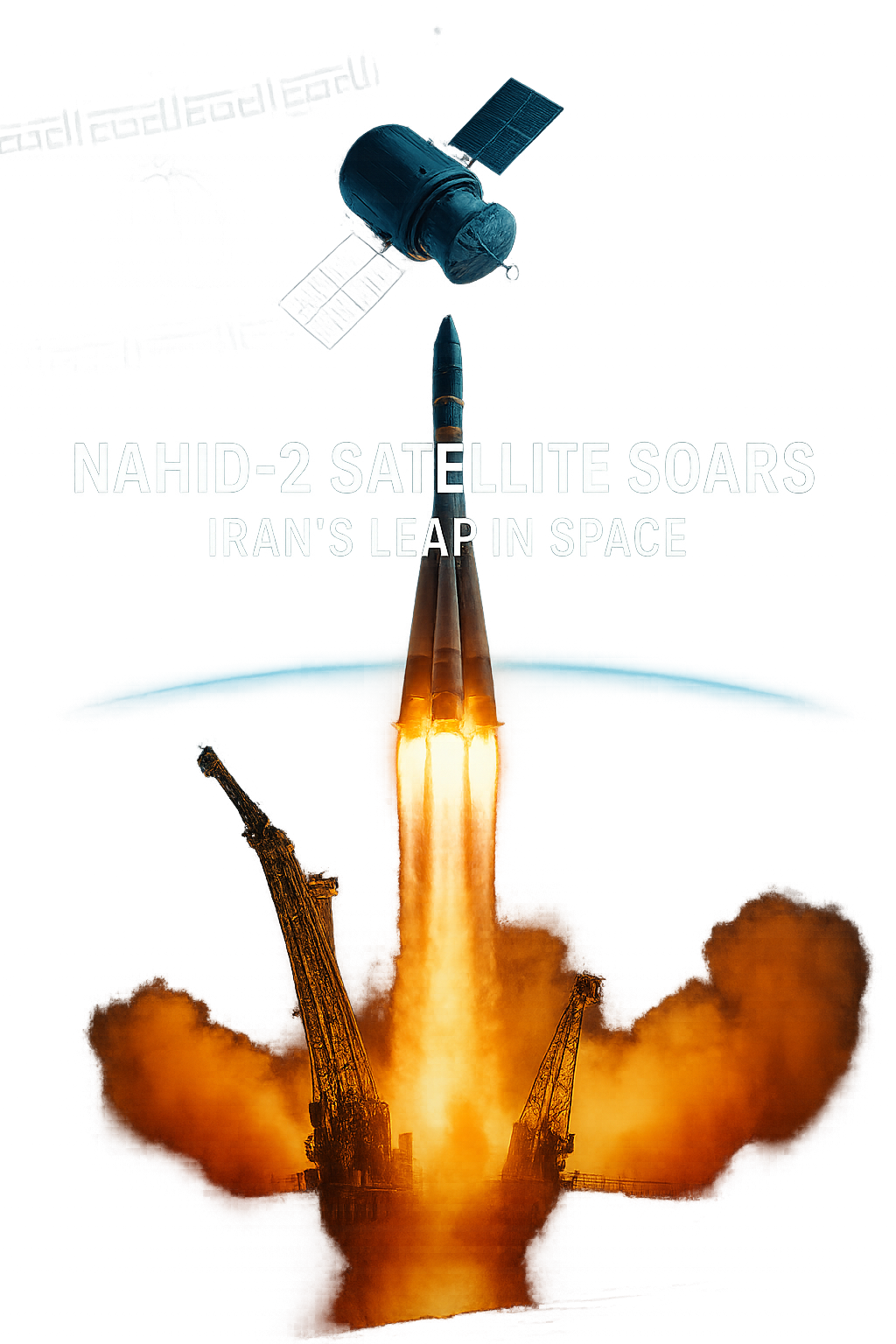A Major Step Forward for Iran’s Space Program
Nahid-2 Satellite Launch, On July 25, 2025, Iran successfully launched its Nahid-2 communications satellite into space aboard a Russian Soyuz rocket from the Vostochny Cosmodrome in Russia. The event marked a significant milestone in Iran’s ongoing efforts to establish a stronger foothold in space technology, with the Nahid-2 being one of several satellites launched during a multi-payload mission that included Russia’s Unisphere-M3 and M4 satellites along with 18 other satellites from various countries.
What is Nahid-2 and Why It Matters
The Nahid-2 satellite is a part of Iran’s broader ambition to develop indigenous space capabilities. The satellite is designed with a projected lifespan of five years in orbit, consistent with typical Low Earth Orbit (LEO) satellite missions. However, what sets Nahid-2 apart is its indigenously developed propulsion system, a first for Iran. This allows the satellite to adjust its orbital altitude by up to 50 kilometers, an essential feature for maintaining stability, optimal communication coverage, and extending operational life.
This advancement is regarded as both a technical triumph and a calculated geopolitical maneuver. By relying on its own propulsion systems and launching in collaboration with Russia, Iran is signaling both its scientific growth and its desire for greater autonomy in space operations.Nahid-2 Satellite Launch
Implications Beyond Technology: National Pride and Global Attention
The successful deployment of Nahid-2 is not just a technical victory—it’s a symbol of national pride for Iran. In recent years, the country has made headlines for its efforts in aerospace innovation despite facing heavy sanctions and restrictions on technological imports. By showcasing the ability to develop and operate complex space systems like Nahid-2, Iran is sending a clear message: it aims to be a self-reliant player in the global space arena.
Moreover, this mission drew global attention, especially from space analysts and defense experts who are closely monitoring the rise of regional space powers. With nations like China, India, and Iran making bold moves, the coming decade is expected to be a multi-polar space age in which traditional superpowers like the United States and Russia are no longer the only ones in control.Nahid-2 Satellite Launch
Understanding the Orbital Game: LEO vs GEO

Satellites typically operate in Low Earth Orbit (LEO) or Geostationary Earth Orbit (GEO). LEO satellites like Nahid-2 usually have a shorter lifespan (about 5 years) due to the higher atmospheric drag and limited fuel for orbital corrections. On the other hand, GEO satellites typically have a longer operational life of ten years or more because they orbit at much higher altitudes.Nahid-2 Satellite Launch
Nahid-2’s ability to modify its position within a 50 km range offers a technical advantage in station-keeping, especially useful for LEO missions. This capability also opens the door for more flexible coverage, such as adjusting for seasonal or geopolitical communication demands.
The Global Significance of the Multi-Payload Mission
The launch wasn’t just a win for Iran. It was part of a broader international space collaboration, with the Russian Soyuz rocket carrying over 20 satellites from different nations. These missions lower expenses, promote collaboration, and provide more affordable access to space for smaller nations or organizations.Nahid-2 Satellite Launch
Other Satellites on Board:
-
Unisphere-M3 and M4 (Russia): Likely dedicated to environmental or scientific monitoring.
-
18 Other Global Payloads: Various universities and private space firms reportedly had experimental or nano-satellites included in the mission.
Strategic Partnerships: Iran and Russia’s Growing Ties
The successful launch reflects a deepening space partnership between Iran and Russia, especially at a time when both nations are facing international sanctions and are keen to develop independent technological ecosystems. Russia’s willingness to provide launch facilities and technology is expected to accelerate Iran’s space ambitions, especially as Iran eyes more satellite constellations and even remote-sensing satellites in the coming years.
What Will Happen to Iran’s Space Aspirations Next?
With the launch of Nahid-2, Iran is expected to enhance its communication infrastructure, which could support a wide range of applications—from telecommunications and broadcasting to military and surveillance operations. This launch also paves the way for future domestically produced satellites with even greater autonomy and technical complexity.
Ready to open with latest news like this -> Vitalmintmedia


Leave a Reply